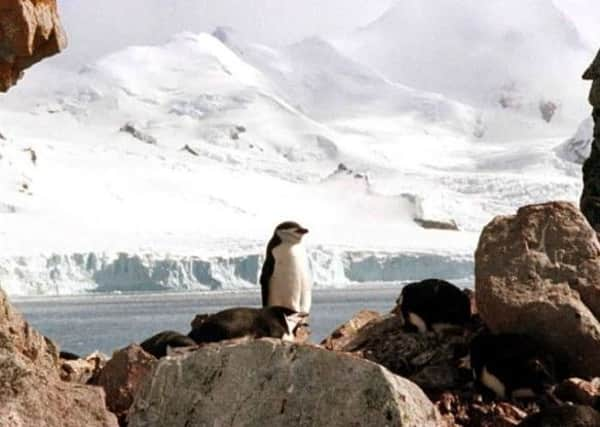El Nino weather systems '˜threaten world's biggest cities'


The latest high tech observation found The West Antarctic Ice Sheet experienced substantial surface melt through the austral summer of 2015-2016 during one of the largest El Niño events of the past 50 years.
And massive amounts of ice melting could become a common occurrence as temperatures rise because of greenhouse gases, the first comprehensive atmospheric measurements in the region since the 1960s found.
Advertisement
Hide AdAdvertisement
Hide AdEl Nino is a climate cycle in the Pacific Ocean every few years which impacts weather patterns globally.
It is one factor that can increase the risk of colder winters in the UK and are due to strong and extensive interactions between the ocean and atmosphere, typically the warming of sea surface temperature in the central-east equatorial Pacific.
The new study found the melting caused by warm air bearing moisture and extensive cloud cover was likely delivered by El Niño over the continental ice sheet which lies in the Western Hemisphere.
Melted snow was spotted over most of the Ross Ice Shelf, a thick platform of floating ice that channels about a third of the ice flowing from the West Antarctic Ice Sheet into the ocean.
It found an ice sheet surface twice the size of California melted during this one summer.
Now fears are growing that it is not a one-off since surface melt enhances ice sheet instability already caused by warm ocean waters melting it from below.
The results were from the ARM West Antarctic Radiation Experiment (AWARE), led by researchers at Scripps Institution of Oceanography at the University of California San Diego.
Although clouds can often cool the surface of the planet by reflecting solar radiation back to space, they also trap heat between the cloud deck and the ground.
Advertisement
Hide AdAdvertisement
Hide AdMeteorological data gathered during AWARE found trapping heat was more influential.
Dan Lubin, AWARE principal investigator and research physicist at Scripps, said: “We were extraordinarily fortunate to be able to deploy state-of-the art equipment to West Antarctica just before this large melt event occurred.
“These atmospheric measurements will help geophysical scientists develop better physical models for projecting how the Antarctic ice sheet might respond to a changing climate and influence sea level rise.”
In the past scientists had to rely on satellite images but in the new study sophisticated instruments were installed on the ice sheet and at McMurdo Station adjacent to the nearby Ross Ice Shelf.
These took detailed measurements of atmospheric conditions at the time of a large-scale melt.
El Niño is characterised by the movement of warm waters to the eastern equatorial Pacific Ocean, which often influences water temperatures off California.
The same climate phenomenon also directs warm marine air toward West Antarctica.
The scientists noted the melting took place even in the presence of a wind pattern that usually counteracts the flow of warm air.
Advertisement
Hide AdAdvertisement
Hide AdDuring the positive phase of the Southern Annular Mode (SAM), strong westerly winds blast around Antarctica, creating a fence of sorts that keeps the continent cold.
The SAM during the 2015-2016 austral summer was strongly positive but nevertheless warm air penetrated the continent.
AWARE researchers suggest that the melt might have been even more pronounced if the SAM were weak.
David Bromwich, co-author and professor of geography at Ohio State University, said: “In West Antarctica, we have a tug-of-war going on between the influence of El Niños and the westerly winds, and it looks like the El Niños are winning.
“It’s a pattern that is emerging.
“And because we expect stronger, more frequent El Niños in the future with a warming climate, we can expect more major surface melt events in West Antarctica.”
The West Antarctic Ice Sheet rests on bedrock below sea level and protected by a fringe of floating ice shelves.
The melting and disintegration of these ice shelves would accelerate the flow of ice into the ocean.
Were the ice sheet to melt completely, as probably occurred during the Earth’s last inter-glacial period about 125,000 years ago, it contains enough mass to raise global mean sea level by three metres (11 feet).
The study was published in the journal Nature Communications.
